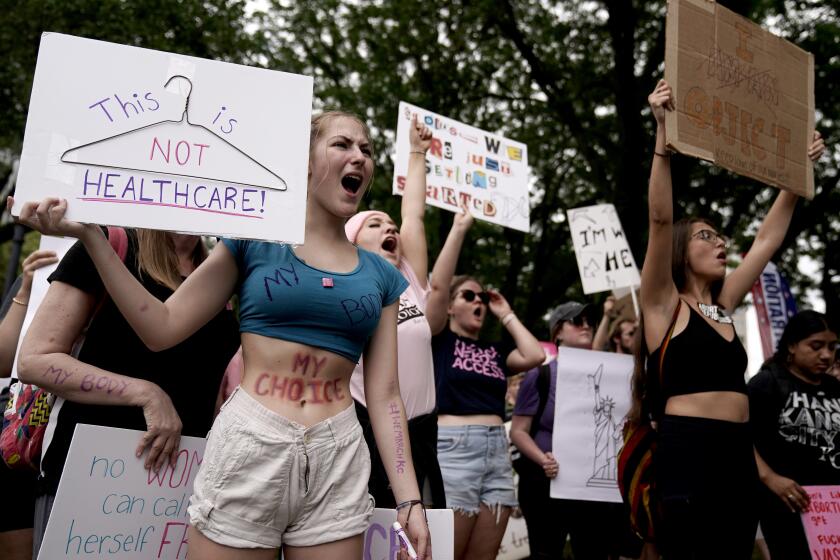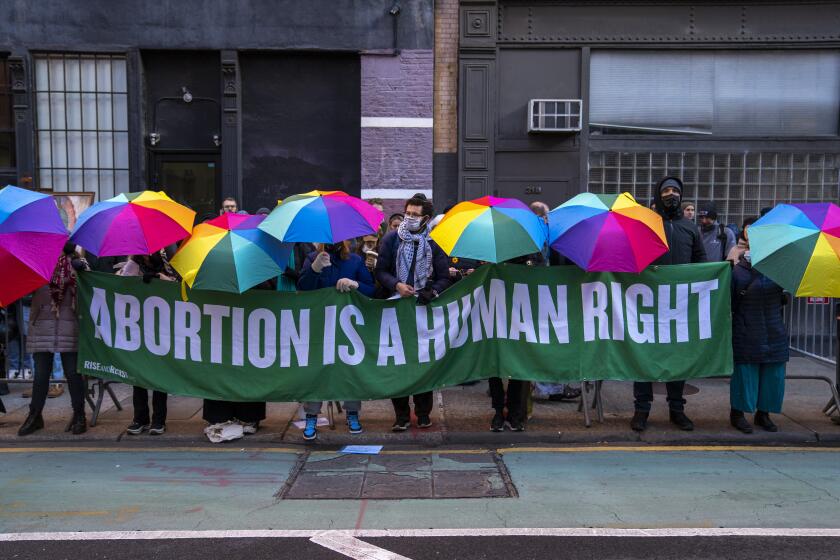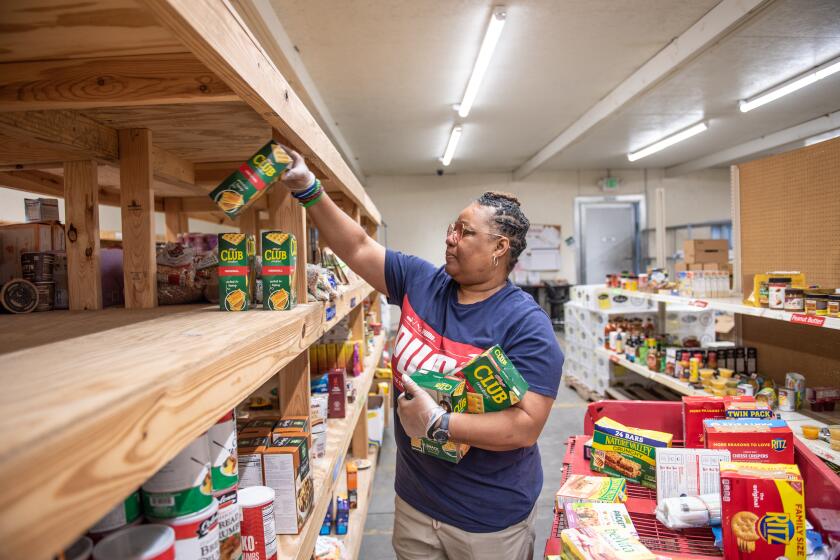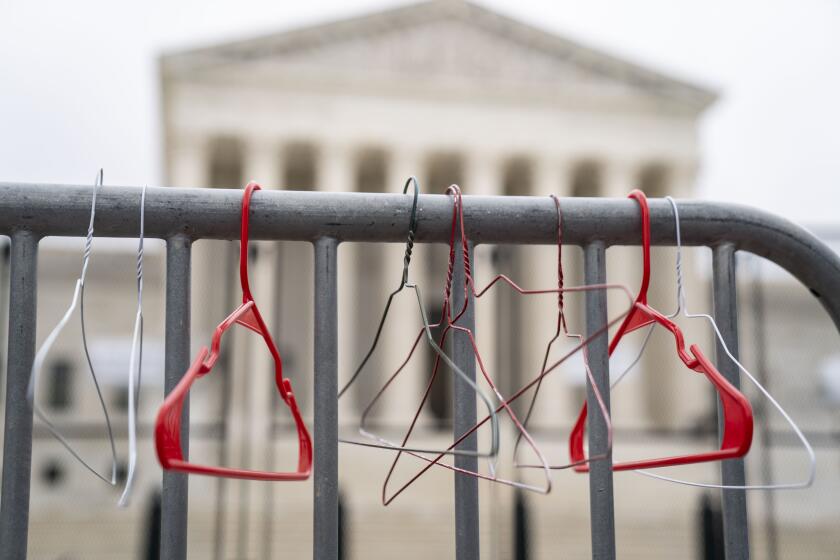Column: The Supreme Court tackles abortion again. How much will it hurt Republicans in 2024?
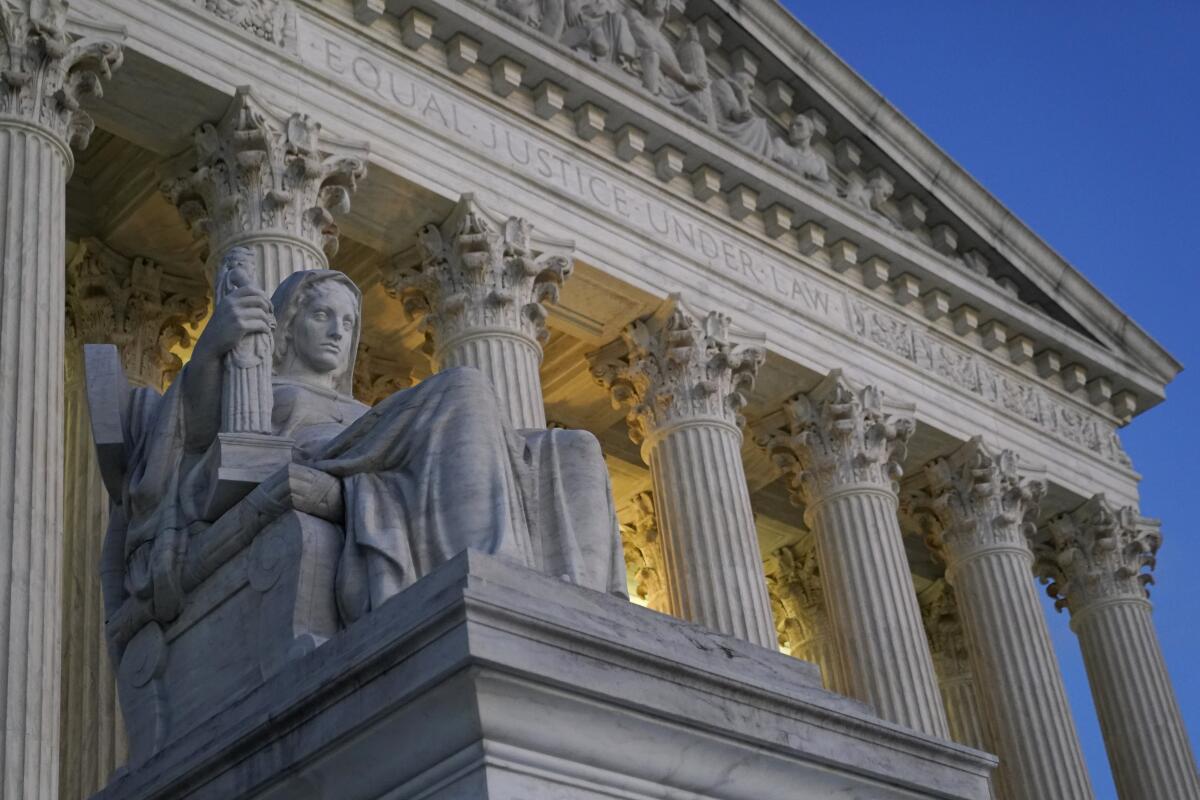
- Share via
To the dismay of Republicans, and the advantage of Democrats, abortion rights remain a high-priority issue for voters nearly two years after the Supreme Court ended a half-century of constitutional protection nationwide. That should come as no surprise.
The topic has rarely been out of the news since the Dobbs decision, what with all the coverage of red states’ bans, voters’ backlash and horror stories of women denied healthcare or forced into unnecessary procedures, costs and travel to get the care they want or need. An Arizona state senator made national headlines in recent days after describing the invasive sonogram and erroneous lecture on abortion alternatives that she had to endure before she could end a pregnancy that wasn’t viable — actions prescribed by state law, not her doctor.
Opinion Columnist
Jackie Calmes
Jackie Calmes brings a critical eye to the national political scene. She has decades of experience covering the White House and Congress.
The drumbeat of real-life testimonials and political controversies won’t let up between now and November. It could well get louder: The Supreme Court on Tuesday will hear arguments in the most significant abortion case since Dobbs, weighing whether to restrict mifepristone, one of two drugs used in medication abortions, now the way most pregnancies are terminated.
The court takes up the case just days after the pro-reproductive rights Guttmacher Institute reported that the number of abortions in the United States was more than 1 million in 2023, the first full year since the justices overturned Roe vs. Wade — despite that ruling and the resulting state bans and strict limits in nearly half the states. That figure represents a 10% increase over 2020, the last year for which data are available. Medication abortions accounted for nearly two-thirds of the total, 63%, up from 53% in 2020.
Legislative efforts in Missouri and Mississippi are attempting to prevent voters from having a say over abortion rights.
In other words, the antiabortion Supreme Court will now decide whether to restrict what has become the most common procedure in states where abortion remains legal, and what’s virtually the only method available — through the mail — in states with abortion bans.
To antiabortion groups, this pill delivery amounts to a “national mail-order abortion scheme” that subverts their long-sought court victory, and they set out to stop it almost as soon as Dobbs was decided. Thus the case against mifepristone that’s now made its way from a like-minded federal judge in Texas, Donald Trump appointee Matthew Kacsmaryk, to the Supreme Court.
Even in states where abortion access is not under threat, purple districts could turn blue because the right is so out of step with American voters.
At least the justices narrowed the scope of what they’ll decide: There’s no chance of an outcome as noxiously sweeping as Kacsmaryk’s ruling, which would have removed mifepristone from the market entirely. Even for the very conservative Supreme Court, as well as for the right-wing 5th Circuit Court of Appeals before it, Kacsmaryk went too far.
In reaching his decision, the district judge, formerly a lawyer for a Christian conservative legal group, substituted his scientific expertise — none — for that of the U.S. Food and Drug Administration. Way back in 2000, the FDA determined that mifepristone was safe as part of a two-drug regimen with another medication, misoprostol, to abort pregnancies up to seven weeks. By 2021, with more safety data in hand, the FDA had liberalized the drugs’ use so that patients up to 10 weeks pregnant could get the pills by prescription from pharmacies or by mail, without a doctor dispensing them in person.
Kacsmaryk ruled — in a decision replete with antiabortion jargon about “unborn humans” and citations of scientific studies since retracted — that the FDA should never have approved the drug in the first place. (The Texan is prime evidence for my argument that voters this year must pick a president as if the federal courts are on the ballot too, to make sure Trump never again has power to pack them.) The 5th Circuit disagreed, but it upheld Kacsmaryk’s finding that the FDA had erred in its decisions expanding and easing the pills’ usage.
Fifteen stingy GOP-led states are refusing federal money that would help feed hungry children this summer.
Now it’s up to the Supreme Court to decide whether to turn back the clock, returning to the days when abortion pills could only be administered by doctors in their offices, and only up to seven weeks into a pregnancy.
Women, including in the vast swaths of the nation that ban or severely limit abortion, could still get the second pill, misoprostol, an ulcer medicine used off-label for abortions. But taken alone, it is associated with more cramping, bleeding and nausea. Realistically, women in restrictive states who want or need an abortion will have to hit the road and go elsewhere.
The Guttmacher Institute report on the increase in U.S. abortions attested to how frequent that extraordinary step already is. States without bans saw a 25% increase in abortions last year, on average, compared to 2020. The increase was greatest in states bordering those with bans. Blue-state Illinois, neighbor to antiabortion Indiana and Missouri, had a 72% increase; two-thirds of its patients weren’t Illinois residents. New Mexico, adjacent to Texas and Oklahoma, had 257% more abortions.
We’ve learned the hard way: It matters whether Donald Trump or President Biden is picking federal judges.
If the Supreme Court decides, again, for the antiabortion groups, those percentages will only increase. Scores of thousands more women will be forced to expend time, money and stress to travel out of state for medically approved healthcare, when for most of them, a prescription and pills taken at home is all they’d need.
It’s little wonder that the demand for abortion rights has been driving voters to the polls. As Justice Samuel A. Alito Jr. patronizingly wrote in the Dobbs opinion, “Women are not without electoral or political power.” And neither are the men who support women’s freedom. As in past elections since 2022, let’s show the justice how right he was, if only in that one regard.
More to Read
A cure for the common opinion
Get thought-provoking perspectives with our weekly newsletter.
You may occasionally receive promotional content from the Los Angeles Times.

